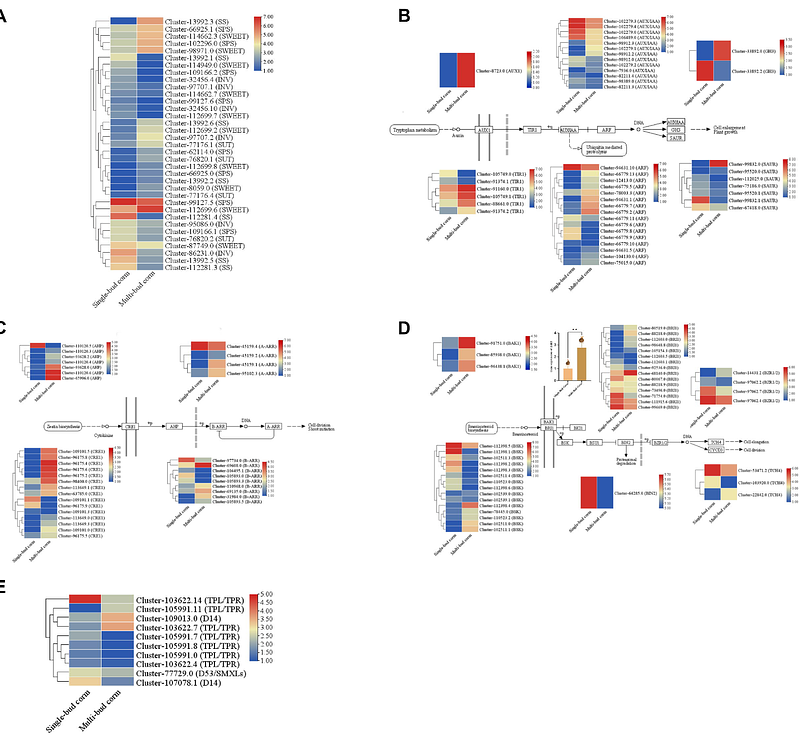Single and Multiple Buds Form characteristics in Amorphophallus muelleri

Single and Multiple Buds Form characteristics in Amorphophallus muelleri
Liu, Y.; Li, Z.; He, J.; Li, W.; Xie, Y.; Ge, S.; Wang, R.; Wu, X.
AbstractThis study compared the physiological characteristics and transcriptomic profiles of single-budded and multi-budded corms, as well as developmental stages of foliar bulbils in Amorphophallus muelleri, to reveal regulatory mechanisms underlying bud development. Hormonal analysis showed that the IAA/CTK ratio was significantly higher in single-budded corms (1.9060 vs 1.5753), while multi-budded corms exhibited higher CTK (0.2766 g/g), BR (0.8692 p mol/g), and SLs (0.5090 ng/g) levels. During foliar bulbils development, ABA content peaked at 41.54 ng/g in the G2 stage, and sucrose reached maximum levels (6.86 mg/g) in the G1 stage. Transcriptomic sequencing identified 742 differentially expressed transcription factors, with over 80% of CRE1 and AHP genes in CTK signaling pathways significantly upregulated. KEGG pathway analysis highlighted starch/sucrose metabolism (215 DEGs) and plant hormone signal transduction (243 DEGs) as key regulatory networks. The study demonstrated that CTK signaling activation and carbohydrate metabolic reprogramming promoted multi-bud formation, while foliar bulbils development displayed stage-specific gene expression patterns, providing theoretical insights for improving konjac propagation coefficient.